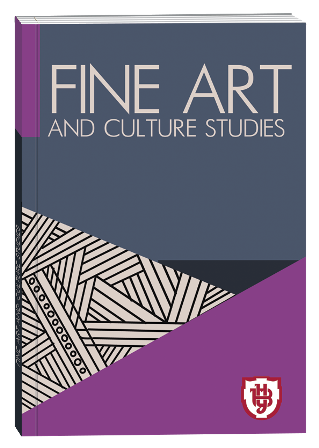INTERPRETATION OF UKRAINIAN MODERNISM OF THE 20TH CENTURY IN THE WORLD ARTISTIC PROCESS
DOI:
https://doi.org/10.32782/facs-2025-2-39Keywords:
modernism, second half of the 20th century, Kyiv, Kyiv architecture, Kyiv BAUHAUSAbstract
The article examines the development of modernist trends in the art and architecture of Kyiv in the second half of the 20th century. It examines the departure from the Empire style and the formation of new architectural forms under the influence of general trends and local characteristics. Special attention is paid to the analysis of the iconic architectural objects of Kyiv of this period, in particular the Faculty of Architecture of the KNUBA, the Central Bus Station, and the UkrINTEI building. Their role in shaping the city's unique architectural landscape and reflecting the stylistic features of modernism is emphasized.In Kyiv, iconic buildings appeared that reflected the spirit of the era, such as the Palace «Ukraine», the hotel «Salyut», and individual residential areas.Architects experimented with forms and space, sometimes with elements of brutalism.In art, the search for new forms of expression continued in painting, sculpture, and graphics, and the development of abstract art was observed.In addition, the article examines the processes that took place in the art of Kyiv during this period. The tendencies of the development of the "stern style" and unofficial art, their contribution to the enrichment of the cultural life of the city and the expansion of the boundaries of artistic expression are analyzed.Modernism in Kyiv developed under difficult conditions of ideological control, but at the same time became a period of active creative searches, the emergence of original architectural and artistic works that reflect the spirit of the era.The work emphasizes the importance of preserving and understanding the heritage of this period for the modern cultural development of the city.Kyiv modernism of the second half of the 20th century is a complex and ambiguous phenomenon. It developed under conditions of ideological control, but at the same time demonstrated a desire for innovation, functionality, and original expression. The architectural and artistic works of this period are an important part of Kyiv's cultural heritage, reflecting the spirit of the era and the creative pursuits of artists.Today, these objects need to be understood, preserved and integrated into the modern urban space as evidence of a unique stage in the history of Kyiv culture.
References
Вечерський В. В. Спадщина містобудування України: теорія і практика історико-містобудівних пам’яткоохоронних досліджень населених місць: НДІТІАМ Головкиївархітектура. Київ, 2003. 558с.
Дьомін М. М., Кондель-Пермінова Н. М., Пучков А. О. Архітектура України у державних преміях: 1941–2007: монографія. Київ: Центр історико-містобудівних досліджень, 2008. 364 с.
Кондель Пермінова Н. М. До історії архітектурної та будівельної освіти в Україні. Сучасні проблеми художньої освіти в Україні. 2006. Вип. 2. С. 107–126.
Кондель-Пермінова Н. М. Культурна спадщина України: Перезавантаження системи збереження. Художня культура. Актуальні проблеми. 2018. №14. С. 20–27.
Даниленко В. Дизайн України в Європейському вимірі ХХ століття. Нариси з історії українського дизайну ХХ століття. 2012. С. 6-35.
Тимофієнко В. І. Архітектура і монументальне мистецтво : терміни і поняття: монографія. Київ: Вид-во Ін-ту проблем сучасного мистецтва, 2002. 472 с.
Brand Stewart. How Buildings Learn:What Happens After They're Built: monograph. Penguin Books, October 1, 1995. 256 p.
Drostе М. Вauhaus: monograph. Вerlin: Taschen, 2019. 96 p.
Foucault Michel. Discipline and Punish: monograph. The Birth of the Prison Vintage Books, April 25, 1995. 333 p.
Harvey David. From the Right to the City to the UrbanRevolution:monograph. Verso, April 9, 2013. 208 p.







